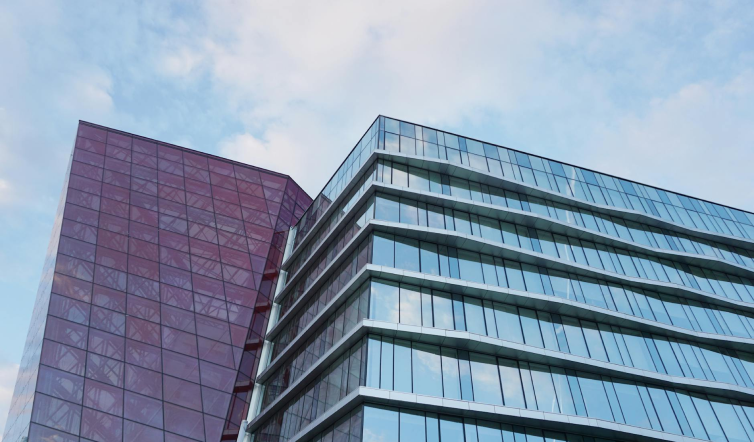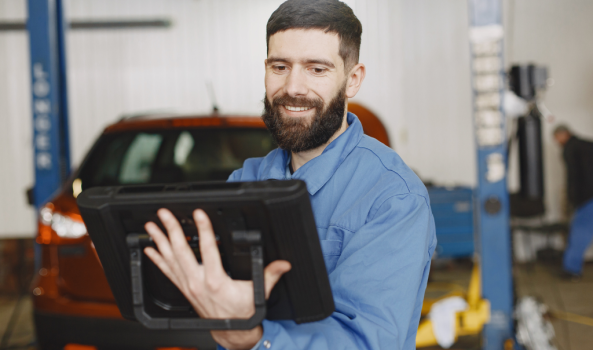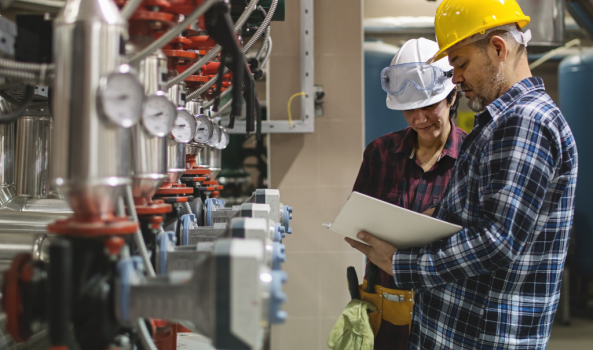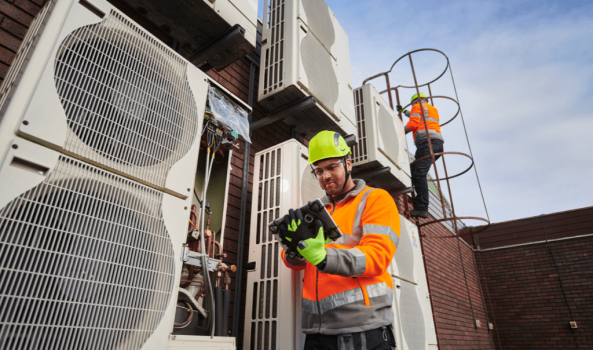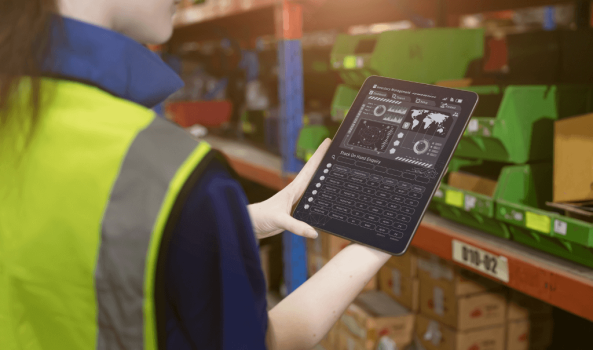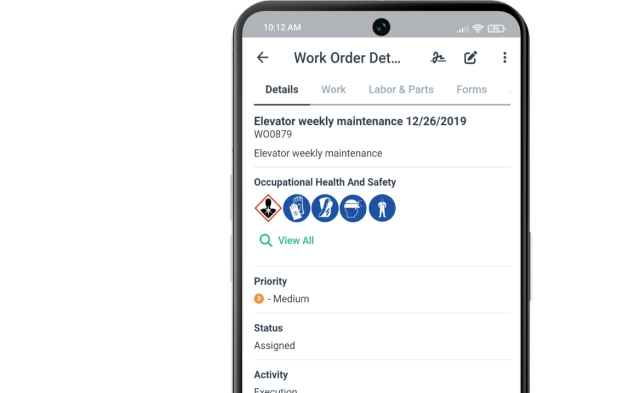Get a Free WorkTrek Demo
Let's show you how WorkTrek can help you optimize your maintenance operation.
Try for freeCommercial property owners face a constant challenge in maintaining their buildings to protect their investment and keep tenants satisfied. From HVAC systems breaking down unexpectedly to parking lots needing repairs, the demands never stop. The seven key services for commercial property maintenance include HVAC system care, electrical maintenance, plumbing services, structural repairs, exterior upkeep, cleaning services, and emergency response capabilities.
Commercial property maintenance services cover critical building systems, including electrical, plumbing, and HVAC components that require regular attention to prevent costly breakdowns. Property managers who understand these essential services can reduce emergency repair costs by up to 40% while extending the lifespan of their building systems.
So at this point, you might be asking, what exactly is the difference between reactive and proactive maintenance?
This guide examines each service area in detail, providing property owners with a comprehensive approach to developing a maintenance strategy that safeguards their investment while ensuring tenant satisfaction and regulatory compliance.
Key Takeaways
- Regular maintenance of building systems prevents costly emergency repairs and extends the life of equipment.
- Professional services, including cleaning, landscaping, and structural care, maintain property value and tenant satisfaction.
- Proactive maintenance task planning reduces costs while ensuring safety compliance and operational efficiency.
Understanding Commercial Property Maintenance
Commercial property maintenance is the care and upkeep of building systems, structures, and grounds. It is performed to ensure safety, functionality, and visual appeal.

Property managers coordinate these activities with the commercial property maintenance teams to protect investments and maintain tenant satisfaction.
Core Components of Maintenance
Typically, professional property maintenance covers HVAC systems, electrical systems, plumbing, building exteriors, and parking lots. These components work together to create a safe and functional environment for tenants and visitors.
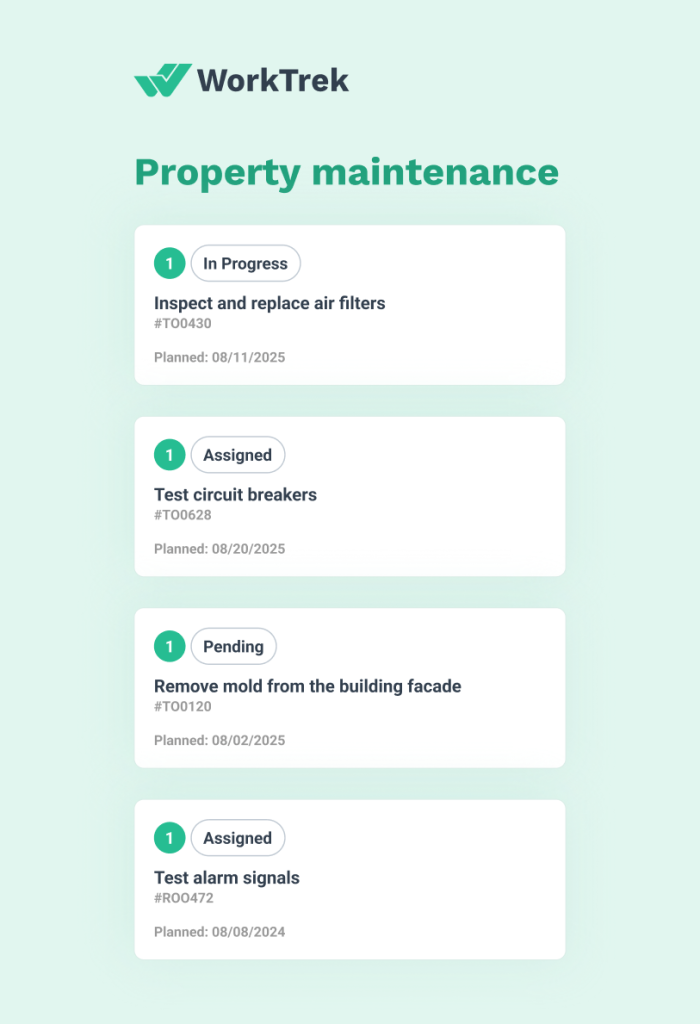
HVAC maintenance involves filter replacement, coil cleaning, and system monitoring.
Regular servicing prevents breakdowns during peak seasons and significantly reduces energy costs.
Electrical Systems
Includes panel inspections, wiring checks, and equipment updates. Licensed professionals identify potential fire hazards and ensure compliance with relevant codes.
Plumbing
Plumbing maintenance encompasses leak repairs, pipe winterization, and the upkeep of drainage systems. Preventive care prevents water damage and costly emergency repairs.
Exterior maintenance
Can include roofing inspections, parking lot repairs, and facade cleaning. These tasks preserve property value and create positive first impressions.
Safety systems
Regularly test fire detectors, security equipment, and emergency exits. Property managers must maintain first aid supplies and ensure that clear evacuation routes are available.
Role in Property Management
A commercial property maintenance strategy relies on regular maintenance to preserve asset value and ensure tenant retention. Regular preventative maintenance reduces emergency repair risks and enhances tenant satisfaction.
Property managers schedule routine inspections to identify issues before they escalate and become more severe.
This proactive approach minimizes downtime and maintains consistent rental income streams.
Tenant satisfaction improves when maintenance issues are addressed quickly. Happy tenants provide positive reviews and referrals, attracting new renters to the property.
Property values remain stable through consistent upkeep of building systems and appearance. Well-maintained properties command higher rental rates and resale values.
Regulatory compliance requires knowledge of local building codes and safety requirements. Professional maintenance providers ensure properties meet all legal standards and avoid costly violations.
Commercial property maintenance has a direct impact on operational efficiency and long-term profitability for property owners and managers.
Routine Maintenance and Upkeep
The backbone of facility management is regular maintenance.
The goal of routine maintenance tasks is to prevent costly repairs while maintaining the safety and functionality of buildings.
Scheduled Inspections
Using a preventive maintenance checklist and schedule can help you organize and catch problems early.
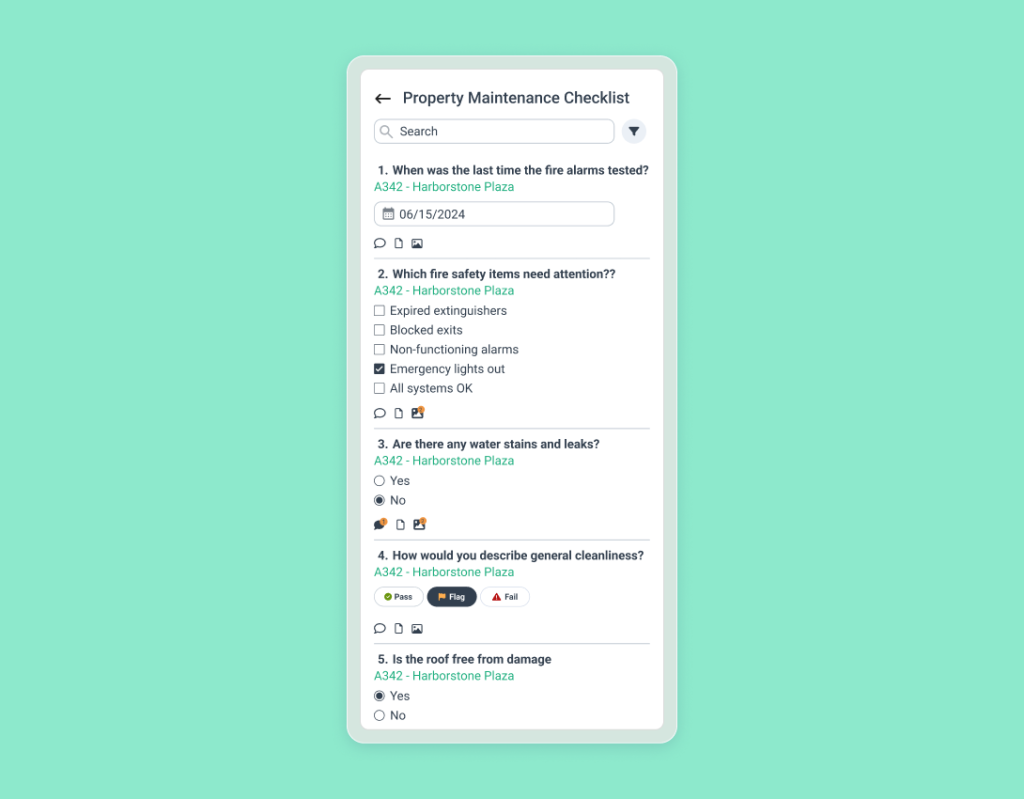
HVAC servicing and plumbing inspections should occur quarterly, while electrical systems need annual reviews.
Maintenance technicians check key systems during these visits:
- HVAC maintenance: Filter replacement, coil cleaning, and control monitoring
- Plumbing: Leak detection, pipe winterization, and drain maintenance
- Electrical: Panel inspections, wiring checks, and connection repairs
- Safety equipment: Fire detectors, extinguishers, and emergency exits
Regular inspections can identify minor issues.
Additionally, professional technicians use specialized equipment to test system performance. They document findings and create repair schedules based on priority levels.
General Repairs
Routine repairs address wear and tear before systems fail.
Common repair tasks include:
- Interior systems: Fixing leaks, replacing worn components, and updating outdated equipment
- Exterior work: Roof repairs, facade maintenance, and parking lot crack filling
- Emergency responses: Burst pipes, gas leaks, and power outages
Preventative maintenance reduces the risk of expensive emergency repairs. Maintenance technicians can schedule these fixes during convenient times.
Quick response times minimize tenant disruption. Professional crews have the tools and expertise to complete repairs efficiently.
Daily Facility Tasks
You need daily maintenance to keep buildings clean and operational. These tasks support tenant satisfaction and property value.
Cleaning and sanitation
Includes shared area maintenance and pest control. Regular cleaning helps prevent health issues and maintains a professional appearance.
Groundskeeping
Involves lawn care, hedge trimming, pruning, and leaf removal. Well-maintained exteriors create positive first impressions for visitors and tenants.
Security and safety
Checks ensure door locks function properly and emergency equipment remains accessible. Daily monitoring prevents security gaps.
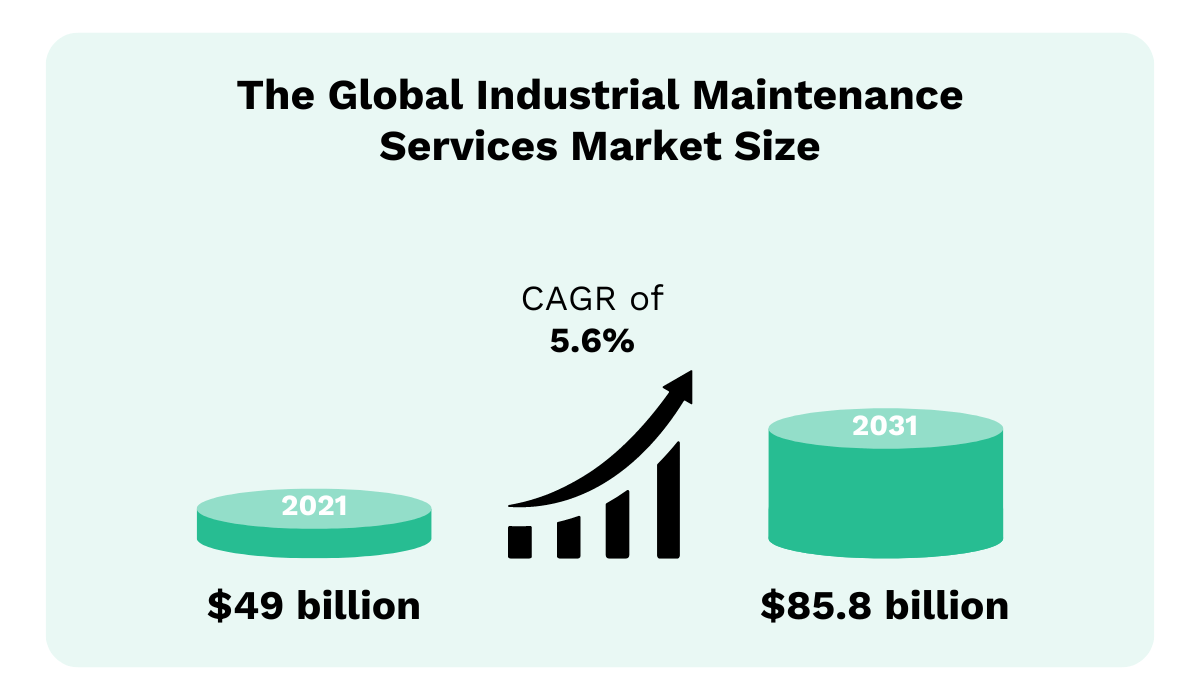
Cleaning, pest control, and groundskeeping should be scheduled biweekly or more frequently. This frequency maintains consistent building standards throughout the year.
Preventive Maintenance and Planning
If you want an efficient building, consider implementing a preventive maintenance plan.
Preventive maintenance can reduce the need for emergency repairs and extend the lifespan of their assets.
Developing a Maintenance Plan
Start by creating a comprehensive asset inventory. This process involves documenting all equipment, systems, and components that require regular attention.
Utilizing a Computerized Maintenance Management System (CMMS) like WorkTrek can automate this process.

Key Asset Categories:
- HVAC systems and components
- Electrical panels and wiring
- Plumbing fixtures and pipes
- Fire safety equipment
- Elevators and mechanical systems
Start with manufacturer guidelines to better understand requirements and schedules.
Following these specifications helps maintain warranties and prevents premature equipment failure.
A good commercial property maintenance checklist prioritizes assets based on their criticality to operations.
Maintenance Strategy and Scheduling
Effective maintenance scheduling requires determining specific tasks and frequencies for each asset. Property owners must balance manufacturer recommendations with operational demands.
Preventative maintenance schedules can help commercial properties remain in good condition and run smoothly. Having a structured plan determines what needs to be done and when.
Common Maintenance Frequencies:
- Daily: Basic inspections and cleaning
- Weekly: HVAC filter checks and system monitoring
- Monthly: Deep cleaning and minor repairs
- Quarterly: Comprehensive system testing
- Annually: Major inspections and equipment overhauls
Maintenance team task assignment can be time-consuming. Using a CMMS system, you can automate a lot of that process.
Long-Term Cost Savings
All maintenance teams want to save money. What is the easiest way to do this?
Implement a preventive maintenance plan.
Regular maintenance extends the lifespan of equipment and reduces the need for emergency service calls.
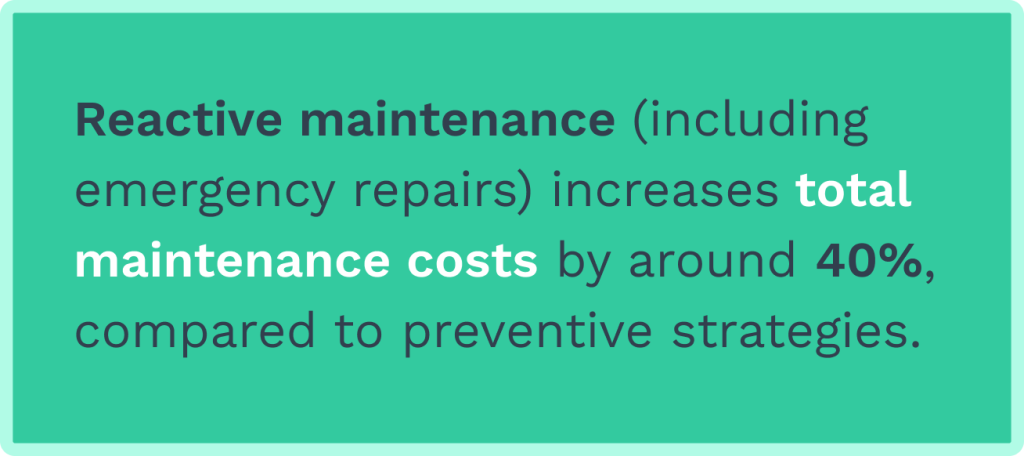
Some studies show that property owners typically save 12-18% on maintenance costs through preventive programs.
These savings come from reduced emergency repairs, less overtime hours, extended equipment life, and improved energy efficiency.
Cost Reduction Benefits:
- Lower emergency repair expenses
- Reduced equipment replacement costs
- Improved energy efficiency
- Decreased business disruption
- Extended warranty coverage
- Lower labor costs
Your tenants also appreciate a well-maintained building. Well-maintained buildings attract quality tenants and command higher rental rates.
Emergency Repairs and Rapid Response
As a maintenance professional, you want to reduce instances of emergency repairs. While this is not always avoidable, there are strategies you can implement to improve the process.
Types of Emergency Services
Emergency repairs are when a critical system in your building fails.
24/7 emergency repairs can include HVAC, plumbing, and electrical systems that require immediate attention.
Below
Plumbing Emergencies
- Burst pipes and major water leaks
- Sewage backups and drainage failures
- Water heater malfunctions
- Flooding incidents
Electrical Failures
- Power outages and circuit breaker issues
- Exposed wiring and sparking outlets
- Emergency lighting system failures
- Fire alarm system malfunctions
- Security systems
HVAC System Breakdowns
- Complete heating or cooling system failures
- Gas leaks and ventilation problems
- Refrigeration unit breakdowns in commercial kitchens
- Air quality emergencies
Structural Damages
- Roof leaks during severe weather
- Broken windows and security breaches
- Foundation issues and water intrusion
- Elevator and escalator failures
24/7 Response Protocols
Professional emergency response services monitor operations continuously to handle urgent situations promptly. Response protocols ensure quick resolution while maintaining safety standards.
Immediate Response Steps
- Emergency assessment and safety evaluation
- Temporary containment measures
- Contractor dispatch and coordination
- Progress monitoring and updates
Most emergency services are time-sensitive.
Depending on your internal response policies and Service Level Agreements (SLAs), critical safety issues receive responses within one to two hours.
Non-critical emergencies typically get addressed within 4-6 hours.
Communication Protocols
Develop clear communication channels for reporting emergencies. Give tenants visibility through a customer portal which is usually part of a CMMS system.
Vendor Coordination
Depending on the emergency, you might have to use an outside service provider.
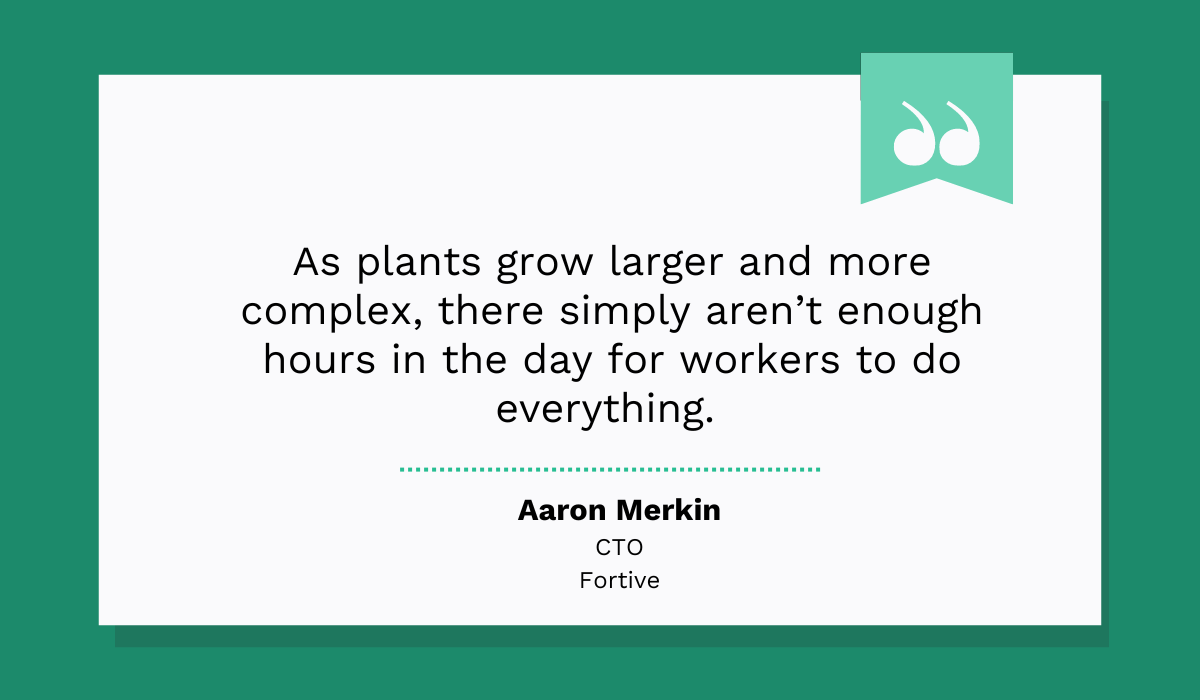
Establish clear service level response times to ensure repairs are completed within agreed-upon timeframes while maintaining quality standards.
Risk Mitigation Strategies
As a maintenance manager, your goal is to reduce risks. Here are a few ways to do that:
- Monthly system checks for critical equipment
- Seasonal weatherproofing assessments
- Regular safety equipment testing, including lighting maintenance
- Documentation of potential problem areas
Emergency Preparedness Plans
Property managers should develop a comprehensive action plan for different emergency scenarios that is shared with the entire team.
These plans include contact information for emergency services, utility providers, and specialized contractors.
Technology Integration
Modern emergency management uses digital tools for faster response coordination. Centralized maintenance platforms streamline emergency processes and improve overall efficiency.
Staff Training
On-site personnel receive training to safely handle initial emergency responses. They learn to assess situations, implement temporary safety measures, and coordinate effectively with emergency services.
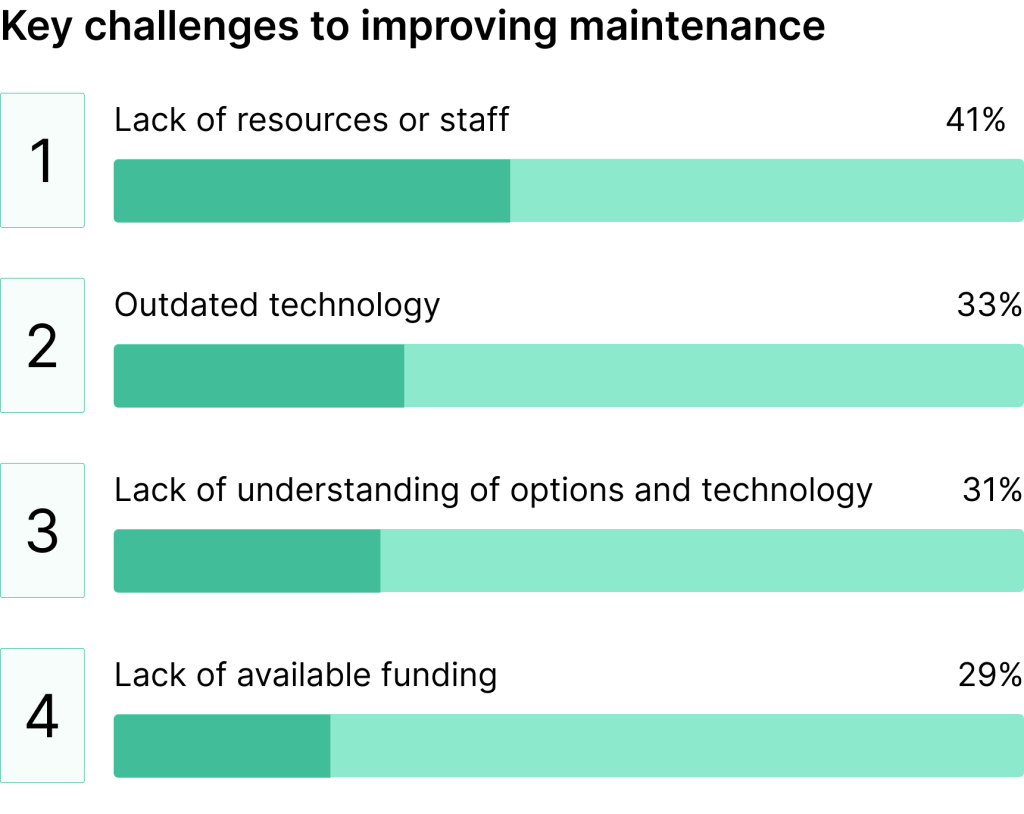
Vendor Relationships
It is really important to build strong relationships with reliable contractors. You never know when you need them for specific tasks.
Exterior and Grounds Maintenance
The exterior and grounds are what your visitors first see. Regular maintenance can keep buildings safe, attractive, and valuable through landscaping care, parking lot maintenance, clean windows, and overall structural upkeep.
Landscaping Solutions
Well-maintained landscapes boost property value, can attract quality tenants, and improve curb appeal.
Professional grounds maintenance encompasses essential services that maintain the health and appeal of outdoor spaces.
Lawn Care
This forms the foundation of landscape maintenance – keeping the grass looking good. Keep a consistent schedule to keep up a professional appearance.
Seasonal plantings
Keep the property’s look fresh and up to date all year. Spring flowers, summer annuals, and fall decorations create visual interest.
Tree and shrub care
Keep trees and shrubs pruned and remove any dead branches to reduce safety hazards. Implementing a regular trimming process also prevents overgrowth.
Irrigation systems
Regularly check the irrigation system to ensure plants receive adequate water without waste.
Structural Repairs and Renovations
Building exteriors require ongoing maintenance to prevent small problems from becoming expensive repairs.
Concrete and masonry
Repairs fix cracks, chips, and weathering damage. Water can cause a lot of damage, so make sure to stay on top of these issues.
Roofing maintenance
Regularly inspect major roof areas like gutters and shingles. Hire a professional annually to do a thorough inspection.
Exterior painting
Inspect, repaint, and repair areas as necessary. Depending on the weather conditions, you might need to repaint buildings every 5-7 years.
Pressure washing
Can removes built-up dirt, mold, and mildew from building surfaces. Schedule annual pressure washing for critical areas.
Conclusion
Commercial property maintenance necessitates a comprehensive approach that strikes a balance between proactive planning and responsive emergency services.
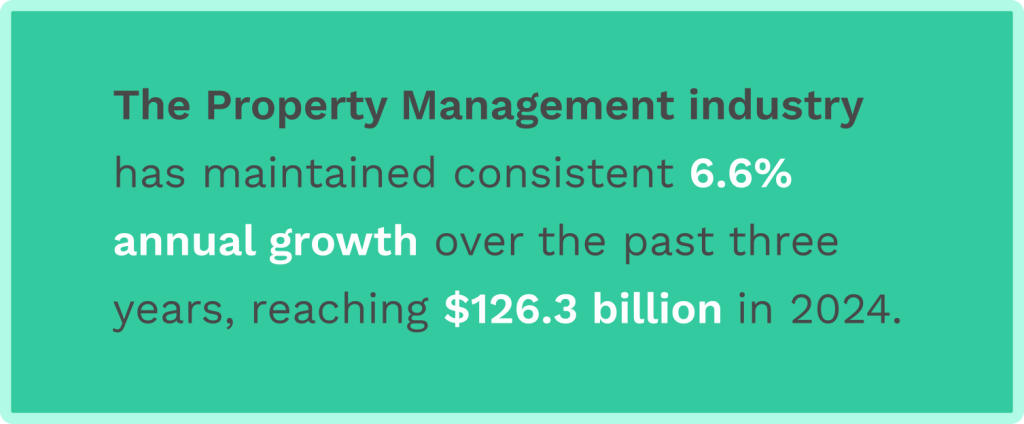
The seven key service areas—HVAC systems, electrical maintenance, plumbing, structural repairs, exterior upkeep, cleaning, and emergency response—work together to protect your investment while ensuring tenant satisfaction.
Implementing a preventive maintenance strategy can deliver measurable returns through reduced emergency repair costs, extended equipment lifespan, and improved energy efficiency.
Studies consistently show that property owners can achieve 12-18% cost savings while reducing emergency repairs by up to 40%.



